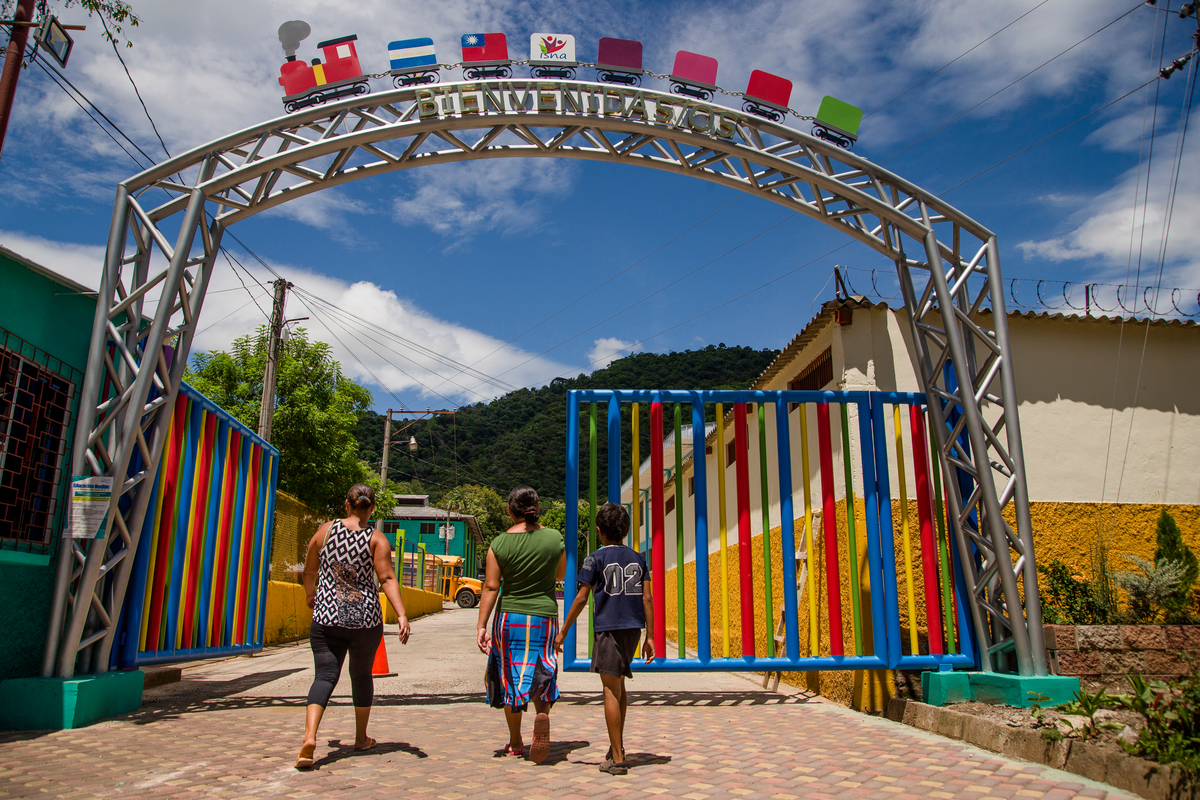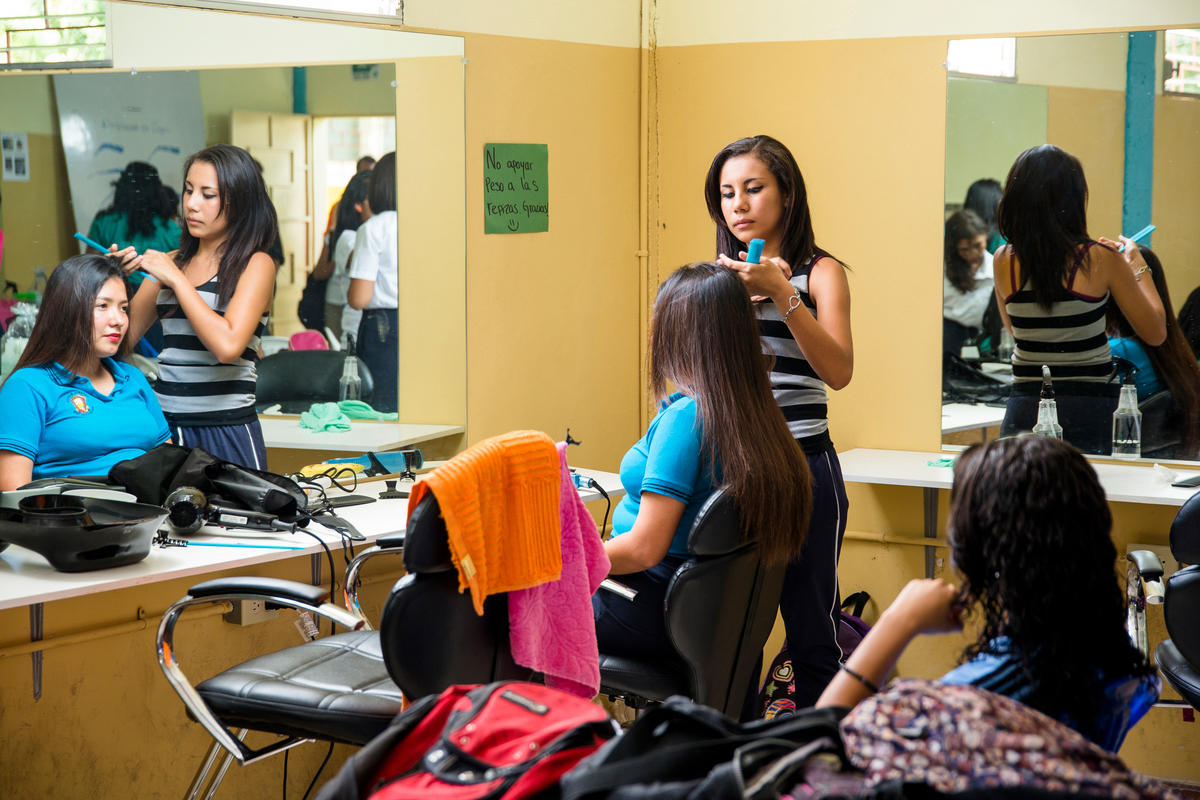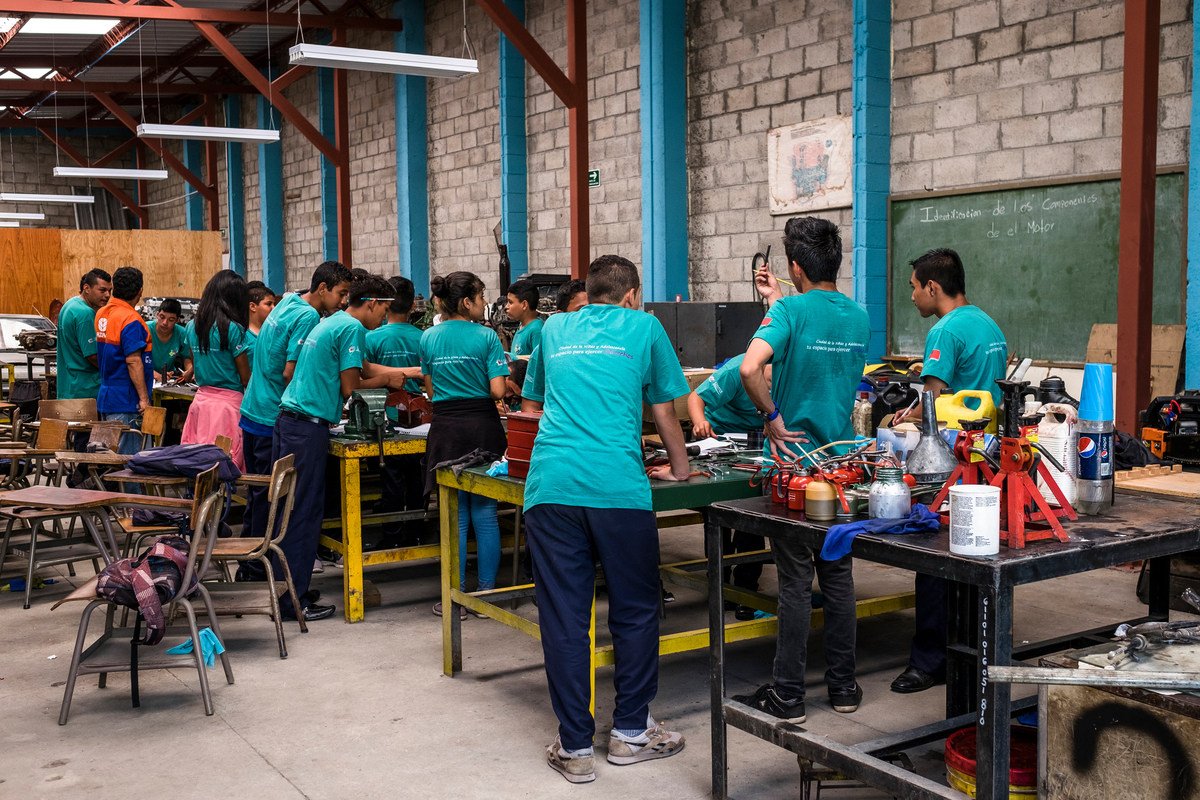Childhood stolen by street gangs

Childhood stolen by street gangs
The two members of the Barrio 18 street gang waited until 15-year-old Maribel’s* parents were out and then called at the family home in the outskirts of San Salvador. When she answered the door, they told her they were going to rape her.
“They were shouting about what they were going to do to me. I managed to use all my strength to push the door shut on them. They were still outside shouting when I called my dad,” recalls Maribel.
These were no empty threats. Members of the murderous street gangs, or maras, have killed girls, and even their parents, for refusing their advances.
When her father, a security guard, got home he realized that it was no longer safe for his teenage daughter to be in the neighbourhood, and fled with the family to another department in western El Salvador.
“I was terrified,” she recalls.
Maribel is among a soaring number of children and adolescents running for their lives from worsening violence in Central America’s so-called Northern Triangle countries of El Salvador, Honduras and Guatemala.
"They were shouting about what they were going to do to me ... I was terrified."
Running rackets from extortion, to robbery and kidnapping, the gangs’ reach extends throughout the region and beyond, turning urban slums and ramshackle villages alike into a patchwork of rival territories.
While now out of reach of Barrio 18 members who threatened to rape her, Maribel is far from safe. In the neighbourhood she fled to she is surrounded by members of their blood rivals, the Mara Salvatrucha.
“It is better to have nothing to do with the gangs. But it can be hard to keep them out of your life,” she says. “They feel immune because they have guns and people are scared of them. They think they can kill who they like, and they can rape who they like.”
Even the lives of pre-teens are blighted by the gangs. Twelve-year-old Ruth attends a government-run day centre with Maribel which gives workshops and skills training to adolescents and provides a safe space away from gang life.
Ruth describes how she has to walk past gang members on her street on a daily basis, and her classmates are sometimes among them.
“If they call out to me I will say ‘hello’ because I don’t want to ignore them and make them angry. But I try not to go near them because I know that will only lead to trouble,” she says.
Soaring gang and other violence drove more than 110,000 Salvadorans, Hondurans and Guatemalans to seek asylum in neighbouring countries last year, mainly Mexico and the United States, a more than five-fold increase over three years, according to UNHCR figures.
Children are particularly at risk. Tens of thousands of youngsters like Maribel have fled their homes to seek refuge within their countries or abroad.
“They are trapped between these two gangs that are constantly fighting, and this leads people to try and find safer places to live,” said Jose Samaniego, who heads the UN Refugee Agency's Regional Office in Panama. “This has a long term impact on their education and their lives.”
Sexual violence, or the threat of it, is just one danger that children face at the hands of the gangs. In neighbouring Guatemala, David described how gun and knife-wielding “mareros” in the sprawling capital, Guatemala City, tried to force him into their gang when he was just 14 with a brutal initiation ritual.
“I was sitting by a soccer pitch near my home when they sat with me and offered me marijuana, but I said I didn’t smoke it, so they gave me beer instead. Then they beat me for the count of 13, and said I had passed the initiation and was in the gang now,” recalls David, who saw no alternative but to run for his life.
“This has a long-term impact on their education and their lives.”
“I left my mom’s house the very next day and stayed with a family friend across the city. If I had gone back to the barrio and refused to be in the gang, they would have killed me,” he adds.
The dividing lines marking the turf of rival gangs have become blood-stained frontlines that cut through cities like perilous jagged edges. Teenagers even have problems going to school, if their routes cross them.
“There are youths who could make it to their school in just seven minutes, but they can’t go that way because that means passing mara territory. They have to go back eight to 10 blocks to take a bus and they end up spending 40 minutes on their way to school,” says Mauricio Gaborit, from the Central American University, in San Salvador, who studies violence in the country.
“There comes a moment for youths when the situation is untenable.”
Severing family and community ties is a wrenching and risky experience for children. But youngsters like David say they feel they have no other option.
“I didn’t want to leave my mother and my younger brother when I was just 14, but what else could I do?” he says. “You get to a point where you just have to think about surviving.”
*All children’s names have been changed for protection purposes.












